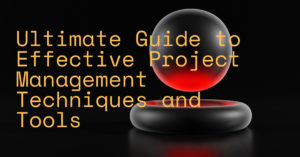
As an engineer, you know the significance of excellent project management in ensuring success. Whether your project is small or complicated, the correct management practices may help you remain on track, fulfil deadlines, and provide high-quality outcomes. This blog article will look at some of the top project management tools and approaches for efficiently managing engineering projects.
Establishing Specific Goals and Objectives
Setting defined goals and objectives for your project is the first step in good project management. This is vital since it allows you to concentrate your efforts and set the course of your project. Making goals and objectives quantifiable and achievable while developing them is critical. This will allow you to track your progress and make any modifications. Furthermore, it is essential to convey your project team members’ aims and objectives so that everyone is on the same page.
Scheduling and Planning
Planning and scheduling are vital parts of project management, especially when it comes to engineering projects. A thorough project plan is critical for keeping your project on track and meeting deadlines. The Gantt chart is a collaborative project management tool for planning and scheduling. This application allows you to express and follow the status of your project schedule graphically. Another essential method is critical path analysis, which assists you in identifying and allocating resources to the essential activities in your project.
Management of Resources
Resource management is critical to the success of any project. As a project manager, it is vital to estimate and distribute the resources needed for your project appropriately. This involves managing your team members’ time and effort, as well as any necessary equipment or resources. It is critical to track resource utilization and make essential modifications to ensure that resources are used efficiently.
Management of Risk
Risk management is an essential component of project management because it assists in identifying and mitigating possible issues before they arise. Identifying potential risks, analyzing their likelihood and impact, and establishing a plan to reduce their effects are all part of this process. You can assist in keeping your project on schedule and avoiding costly delays by taking a proactive approach to risk management.
Collaboration and communication
Communication and teamwork are critical to the success of any endeavour. As a project manager, you must develop open communication channels with your project team members and stakeholders. This involves holding frequent meetings, providing status updates, and using project management tools. Furthermore, it is critical to promote a collaborative work atmosphere in which team members feel comfortable discussing ideas and collaborating to develop answers.
Progress Monitoring and Control
Monitoring and regulating progress are critical for keeping your project on track and meeting deadlines. This involves keeping track of progress and reporting to stakeholders. To achieve this successfully, performance measurements must be established that can be used to track progress and detect problems. Utilizing project management software to track progress and make modifications as needed is also critical.
Project Management in an Agile Environment
Agile project management is a well-known technique for project management in software development. It is founded on the Agile Manifesto, which places a premium on flexibility and customer happiness. This method provides additional flexibility since it enables adjustments during the project. Short iterations, fast delivery, and continuous improvement are hallmarks of agile project management.
Project Management at its Finest
Extreme project management is a strategy for managing large, complicated projects. Short iterations, fast delivery, and continual improvement define this strategy. Powerful project management also emphasizes setting clear goals and objectives, communicating effectively, and taking a proactive approach to risk management. It is especially effective for projects with high uncertainty, such as those in the aerospace and military sectors.
Technique for Program Evaluation and Review (PERT)
The Program Evaluation and Review Technique (PERT) is a project management method for planning and scheduling large projects. PERT is a network-based approach that assists project managers in identifying a project’s critical path, which is the sequence of activities that must be done on time for the project to be completed on time. PERT diagrams are an excellent tool for managing big and complicated projects because they provide a visual picture of their activities and dependencies.
The success of every engineering project is dependent on effective project management. Project managers can guarantee that their projects stay on track, fulfil deadlines, and produce high-quality outcomes by employing the correct tools and approaches. Setting clear goals and objectives, planning and scheduling, managing resources, risk management, communication and collaboration, monitoring and controlling progress, Agile project management, extreme project management, and PERT are some of the essential tools and approaches mentioned in this article. Using these tools and techniques, you may increase your chances of success and produce a successful project. Remember that each project is unique. Thus there is no one-size-fits-all strategy to project management; instead, you should always analyze and choose the optimal project management technique.

